
Unveil the Rich Legacy of Chinese Jewelry History
Dive into the allure of Chinese jewelry, from ancient symbolism to modern trends.

Chinese jewelry symbols is far more than ornamental beauty; it is a repository of cultural wisdom, and a medium for personal expression. Each piece of jewelry carries with it stories and meanings that have been handed down through generations, revealing a rich tapestry of history, philosophy, and art.
Ancient Chinese jewelry is replete with symbols inspired by nature, mythology, and philosophy. These symbols were believed to imbue the wearer with specific qualities or protect them from harm.
Jewelry in Chinese culture dates back thousands of years, with early pieces discovered in Neolithic burial sites. These artifacts showcase a sophisticated understanding of metallurgy and gemology, indicating that jewelry was not merely decorative but also a marker of social status, wealth, and power.
The Han Dynasty favored simple yet elegant pieces often made of jade, symbolizing purity and moral integrity. The Tang Dynasty, renowned for its opulence, introduced elaborate gold and gemstone jewelry. The Ming and Qing Dynasties saw further refinement in craftsmanship, with intricate designs and symbolic motifs that continue to inspire modern jewelry.
Explore the evolution of Chinese royal jewelry from ancient dynasties to modern trends. Discover the materials, techniques, and symbolism behind these treasures
Read NowChinese jewelry features a plethora of symbols, including birds and flowers, each with its unique meaning. Understanding these chinese jewelry symbols enhances appreciation for the artistry and cultural heritage embedded in each piece. Let’s explore some of the most commonly used symbols and their meanings.
Meaning: The phoenix symbolizes beauty, grace, and prosperity. It is a representation of feminine beauty and purity.
Use in Jewelry: Often paired with the dragon, the phoenix is used in earrings and bracelets to symbolize harmony and auspiciousness, especially in marital contexts.

Meaning: The plum blossom symbolizes resilience and perseverance. It blooms in winter, representing strength in adversity. Use in Jewelry: Plum blossom motifs are used in rings and earrings, symbolizing resilience and hope.

Meaning: Fu represents good fortune and blessings. It is commonly used to symbolize prosperity and happiness.
Use in Jewelry: Fu symbols are found in pendants, bracelets, and earrings, often crafted in gold to bring wealth and good luck to the wearer.

Meaning: Known as the “Double Happiness” symbol, it is deeply associated with weddings and represents marital bliss and joy.
Use in Jewelry: This symbol is commonly used in wedding jewelry, such as charms and bracelets, to celebrate unions and anniversaries.

Meaning: The peony stands for elegance, beauty, and a prosperous life. It is often linked to wealth and honor.
Use in Jewelry: Peony motifs are used in bangles and gold bars, symbolizing a life of prosperity and high status for the wearer.
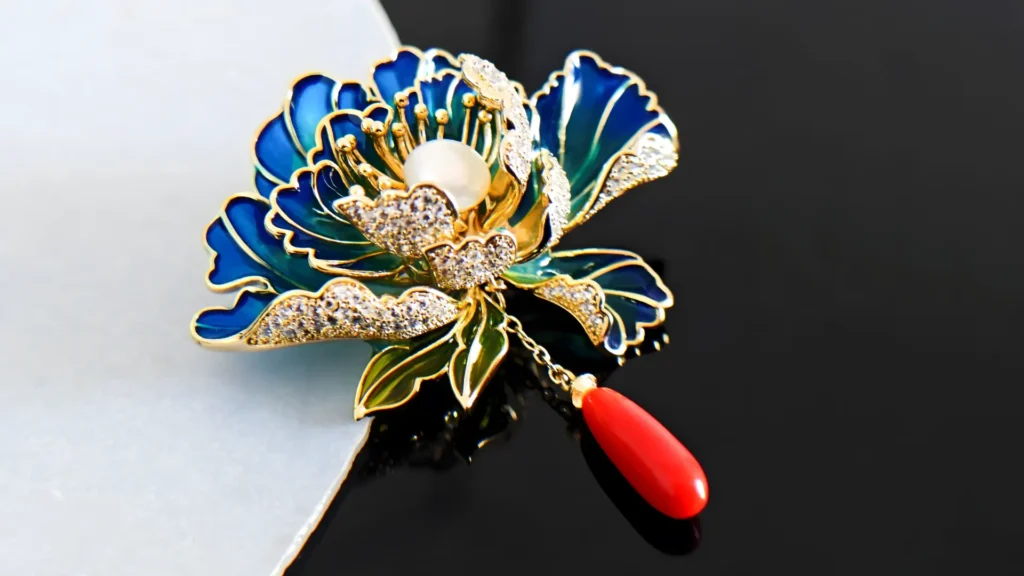
Meaning: Bamboo symbolizes resilience, flexibility, and strength. It represents virtues of humility and modesty.
Use in Jewelry: Bamboo-inspired designs are used to create simple yet elegant pieces, emphasizing natural beauty and cultural significance.

Meaning: The lotus is a symbol of purity, enlightenment, and rebirth. It represents overcoming adversity and achieving spiritual enlightenment.
Use in Jewelry: Lotus designs are incorporated into various jewelry pieces, symbolizing purity and spiritual growth.

Meaning: The crane is a symbol of longevity, wisdom, and peace. It is often associated with a long and prosperous life.
Use in Jewelry: Crane motifs are used in necklaces and brooches, symbolizing the wearer’s wish for a long life and enduring wisdom.

Meaning: The magpie is a symbol of joy and good news. It is often associated with happiness and the arrival of positive events.
Use in Jewelry: Magpie designs are found in earrings and pendants, representing joy and the anticipation of good news.

Meaning: The cicada is a symbol of rebirth and immortality. It is often associated with renewal and transformation.
Use in Jewelry: Cicada motifs are used in brooches and pendants, symbolizing rejuvenation and eternal life.

Meaning: The Ruyi scepter symbolizes power and good fortune. The term “ruyi” means “as you wish,” representing the fulfillment of desires.
Use in Jewelry: Ruyi designs are found in rings and pendants, often crafted in jade or gold, symbolizing authority and the granting of wishes.

Meaning: Clouds symbolize transformation and celestial mobility. They are often associated with good luck and the heavens.
Use in Jewelry: Cloud motifs are used in earrings and bracelets, representing the wearer’s connection to the divine and a life filled with good fortune.

Meaning: Pearls symbolize purity, wisdom, and wealth. They are often associated with the moon and are considered treasures of the sea.
Use in Jewelry: Pearls are used in necklaces and earrings, symbolizing purity and elegance.

Meaning: The gourd is a symbol of protection and good luck. It is often associated with health and the ability to ward off evil spirits.
Use in Jewelry: Gourd motifs are used in pendants and charms, offering protection and good fortune to the wearer.
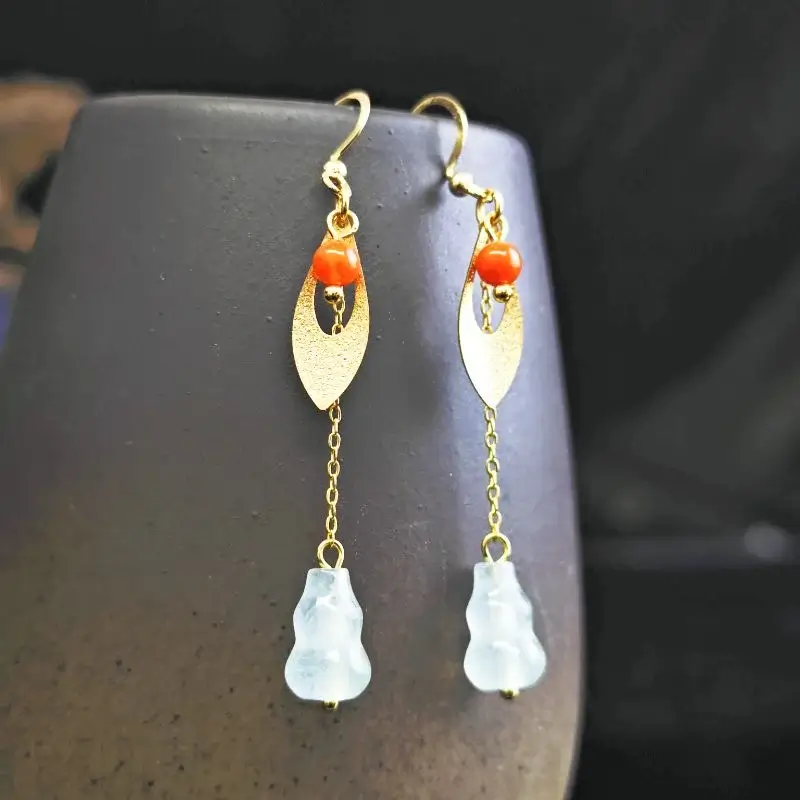
Meaning: The traditional Chinese coin, with its square hole in the center, symbolizes wealth and prosperity. It is often used as a talisman for attracting wealth.
Use in Jewelry: Coin designs are incorporated into necklaces and bracelets, symbolizing financial prosperity and success.

Meaning: The deer is a symbol of longevity and prosperity. The word for deer sounds like “lu,” which means prosperity in Chinese.
Use in Jewelry: Deer motifs are used in earrings and pendants, representing a wish for a long and prosperous life.

Meaning: The fan symbolizes self-discipline and generosity. It is also associated with elegance and grace.
Use in Jewelry: Fan motifs are used in earrings and pendants, representing grace and refined beauty.
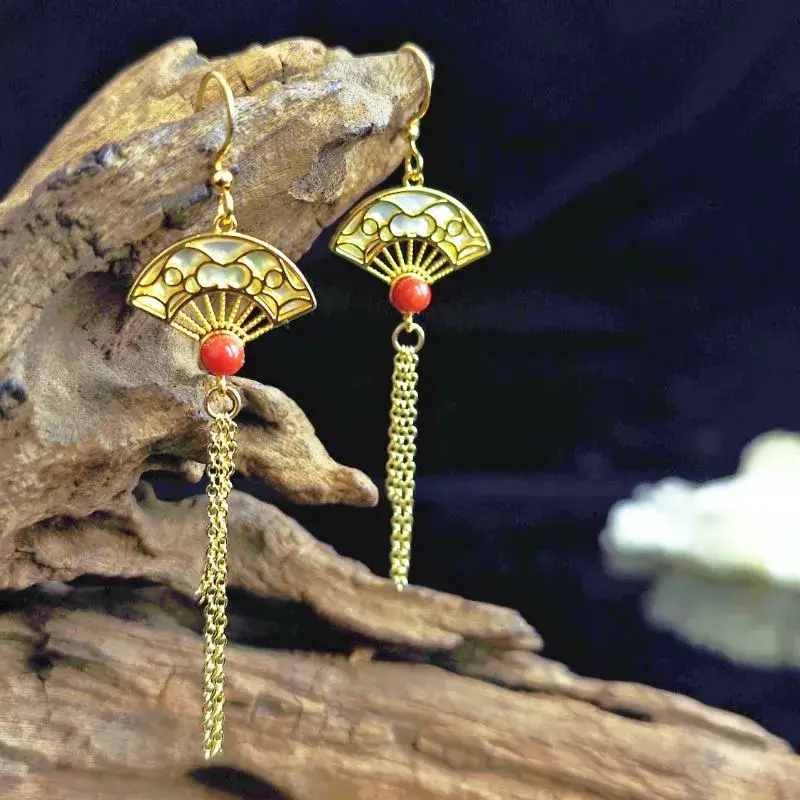
Meaning: The Bi disc symbolizes heaven and the connection between earth and sky. It represents spiritual enlightenment and moral integrity.
Use in Jewelry: Often used as pendants or centerpieces in necklaces, symbolizing the wearer’s pursuit of virtue and spiritual growth.
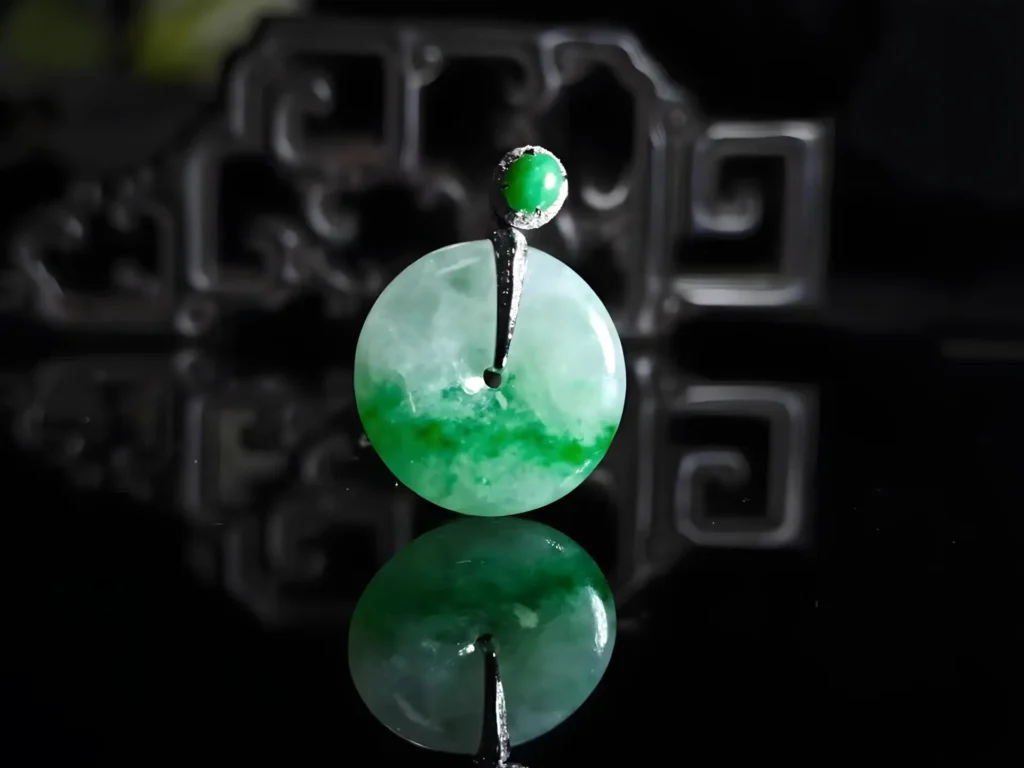
Meaning: Butterflies symbolize love, joy, and longevity. They are also associated with transformation and beauty.
Use in Jewelry: Butterfly motifs are used in hairpins and brooches, representing beauty and the joy of life.
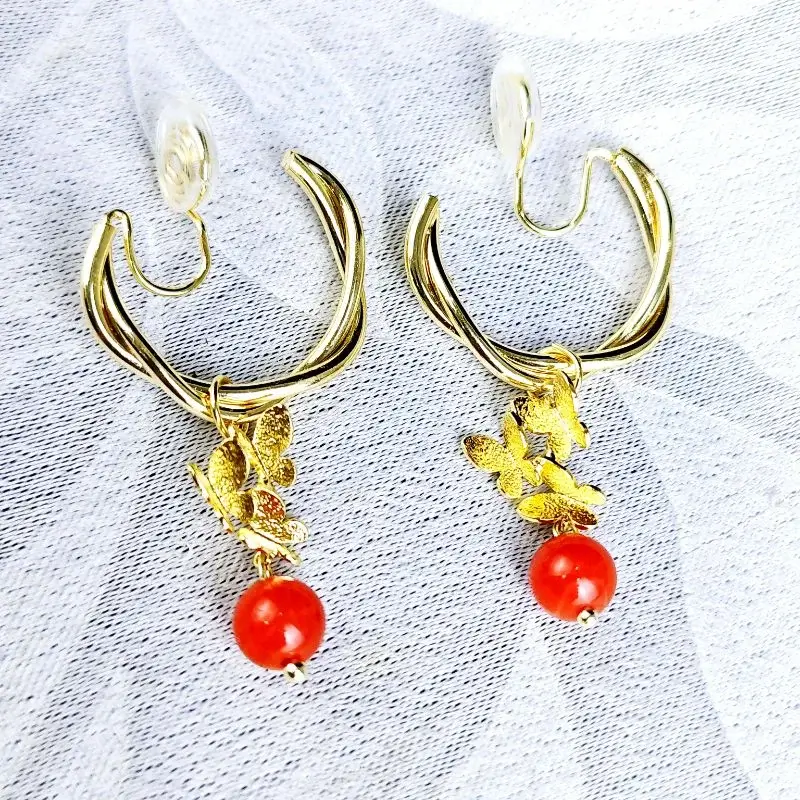
Meaning: The heart is considered the center of emotions and intellect. It is often associated with feelings of love, compassion, and understanding.
Use in Jewelry: The heart symbolizes love, affection, and emotional connection, making it a powerful emblem of romantic and familial bonds. Heart-shaped jewelry pieces are popular as gifts to express love and affection, particularly in romantic relationships, on special occasions such as anniversaries, weddings, or Valentine’s Day.

Meaning: The osmanthus flower symbolizes nobility, fortune, and fertility. It’s associated with the Moon Festival and represents family reunion.
Use in Jewelry: Osmanthus designs are used in hairpins and earrings, symbolizing good fortune and family harmony.

Meaning: Goldfish symbolize abundance and prosperity. In Chinese culture, they are also associated with fertility and good luck.
Use in Jewelry: Goldfish designs are popular in charms and pendants, representing wealth and good fortune.

Meaning: The wave symbol, often depicted as a series of flowing, undulating lines, represents the sea and water. It carries connotations of fluidity, adaptability, and the ever-changing nature of life.
Use in Jewelry: The wave motifs may be incorporated into necklaces, bracelets, and rings to symbolize the wearer’s adaptability and resilience. The connection to the imperial court makes wave designs particularly suitable for pieces intended to convey status and ambition.

Beyond traditional symbols, modern jewelry often carries personal meanings and sentiments, serving as tangible expressions of love, identity, and spirituality.
Many individuals wear jewelry featuring these symbols not only for decorative purposes but also to attract good fortune, health, and happiness. The cultural significance of these symbols continues to resonate, making them timeless choices in jewelry design.
Designers leverage the cultural heritage and traditional craftsmanship to stand out. The emphasis has shifted towards creating unique pieces that resonate with the “Chinese soul“—a concept that combines traditional motifs with contemporary aesthetics.
The integration of modern technology with traditional craftsmanship enables the creation of intricate and symbolic jewelry pieces that honor historical significance while appealing to modern tastes.
Contemporary Chinese jewelry not only serves as a symbol of personal expression but also as a bridge connecting past traditions with present-day innovation. The symbolism embedded in modern jewelry thus continues to play a vital role in reflecting individual identities, cultural heritage, and societal values in an ever-evolving global landscape.
What are the most popular symbols in Chinese jewelry?
The most popular symbols include the dragon, phoenix, Fu (luck), Shou (longevity), lotus flower, and various animal motifs.
How do symbolic meanings vary across different regions?
Symbolic meanings can vary based on local traditions, festivals, and beliefs. Different regions may emphasize different symbols and styles.
What materials are commonly used in crafting symbolic Chinese jewelry?
Common materials include jade, gold, silver, pearls, and various gemstones. Each material adds its own significance and value to the jewelry.
How has modern design influenced traditional Chinese jewelry symbols?
Modern design has introduced new materials and techniques, blending traditional symbols with contemporary aesthetics to create unique and relevant pieces.
What is the significance of specific symbols in ceremonies and rituals?
Symbols used in ceremonies and rituals often invoke protection, blessings, and positive energies. They play a crucial role in enhancing the spiritual and cultural significance of these events.
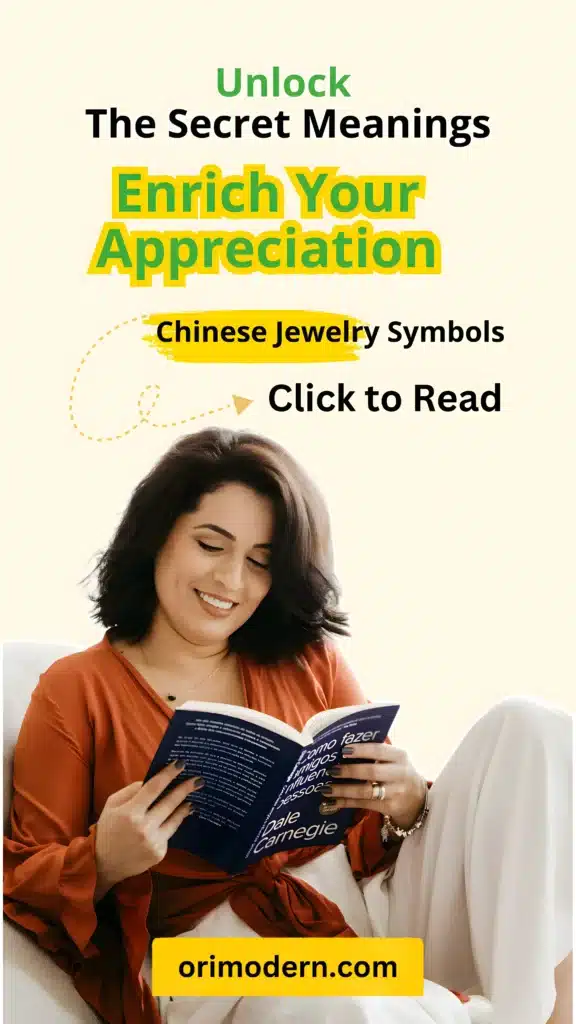

Dive into the allure of Chinese jewelry, from ancient symbolism to modern trends.
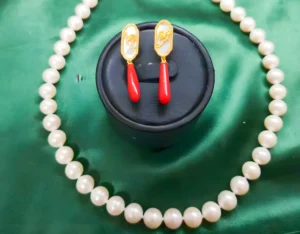
Elevate your wedding look with Chinese royal jewelry.
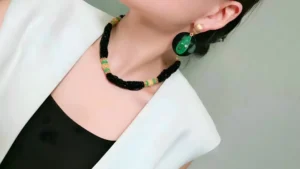
Learn to pair Chinese royal jewelry with your outfits for a stylish upgrade.